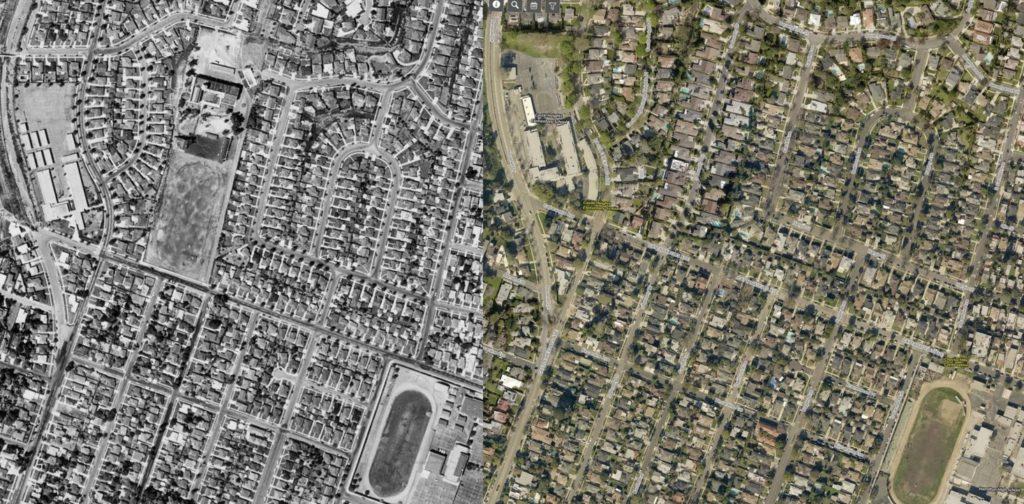Pacific Military Academy – Culver City (1922-1926)
Culver City’s founder, Harry Hazel Culver (1880-1946), established the Pacific Military Academy (PMA) in 1922 in honor of his late father, National Guard General Jacob Hazel Culver (1845-1921). (The junior Culver, who listed himself as “Colonel” in association with PMA, served as a sergeant in the Spanish-American War.) It would be at 6450 Washington Boulevard.
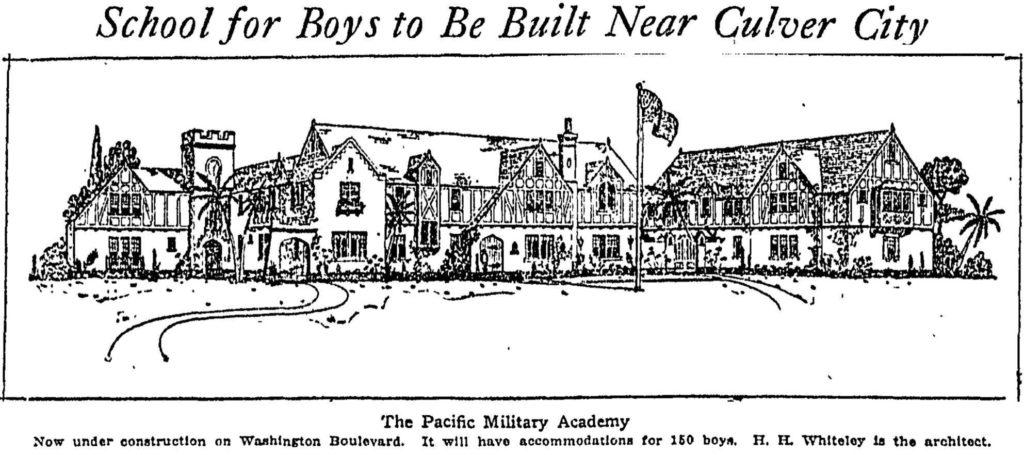
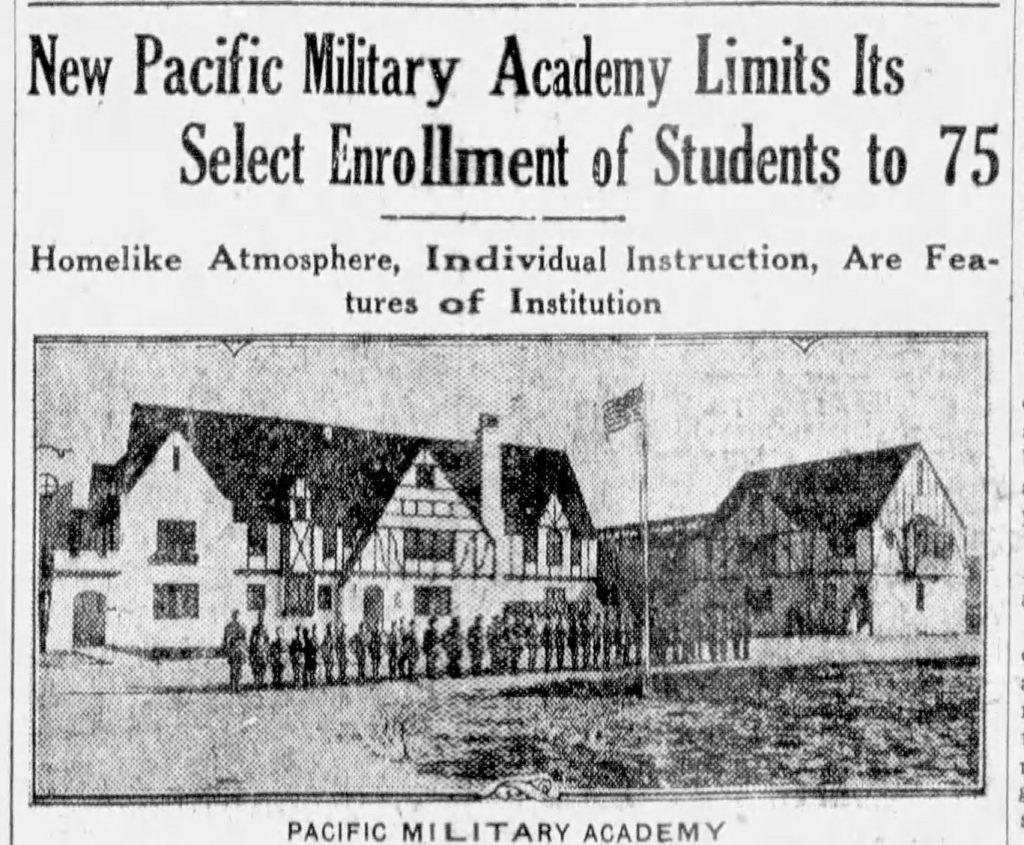
In 1925, “growing enrollment” led Harry H. Culver, president of the board of directors, to purchase 10 acres of land near the California Country Club for $100,000. (L. A. Evening Express, Jan. 24, 1925.) By May 8, they would break ground for the 9601 Cattaraugus Avenue campus, near Castle Heights, where Harry Culver and PMA vice-president Judge Benjamin Franklin Bledsoe (1874-1938) lived. The architect was Harry H. Whitely (1890-1970), who had designed the first building.
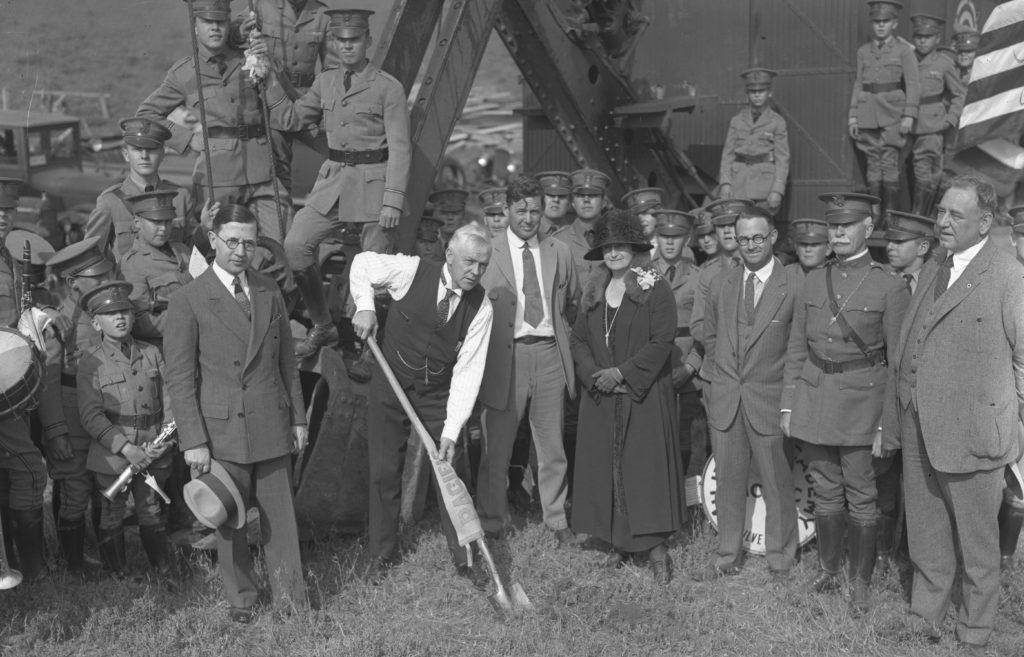
Pacific Military Academy – Los Angeles (1926-1941)
The $200,000 concrete, “fire-proof,” structure would open in 1926. Most news reports – and the school’s advertising – would place it in Culver City. In fact, the area had been annexed to the City of Los Angeles through the Ambassador addition in 1923.


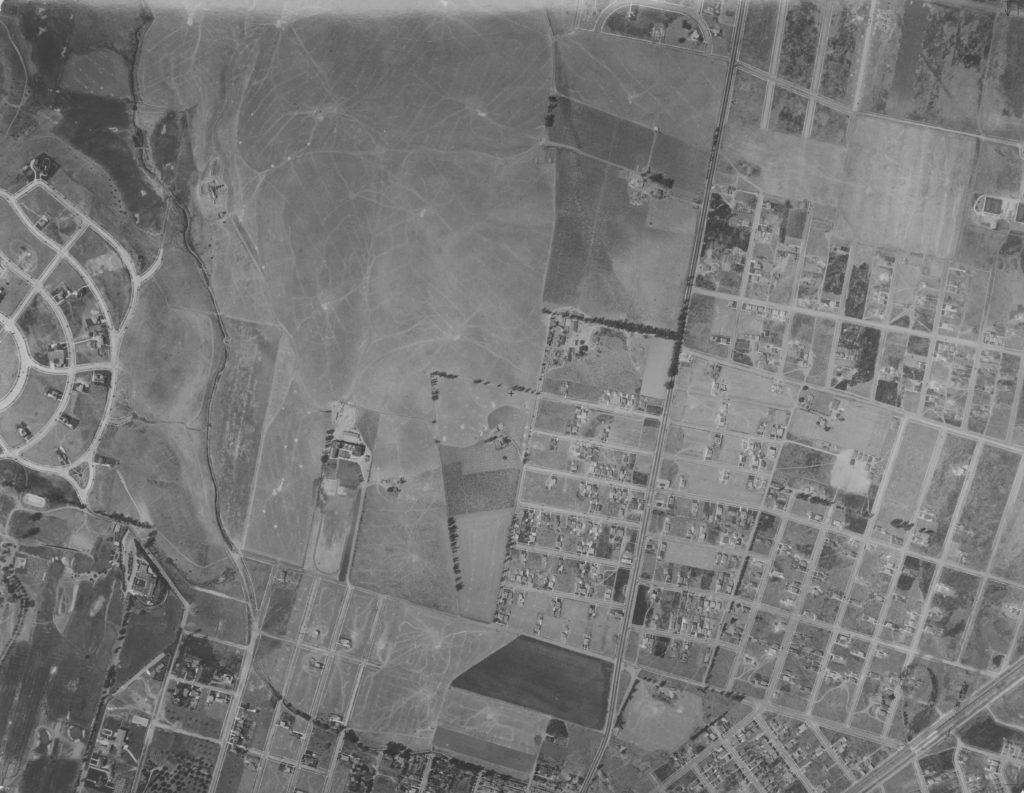
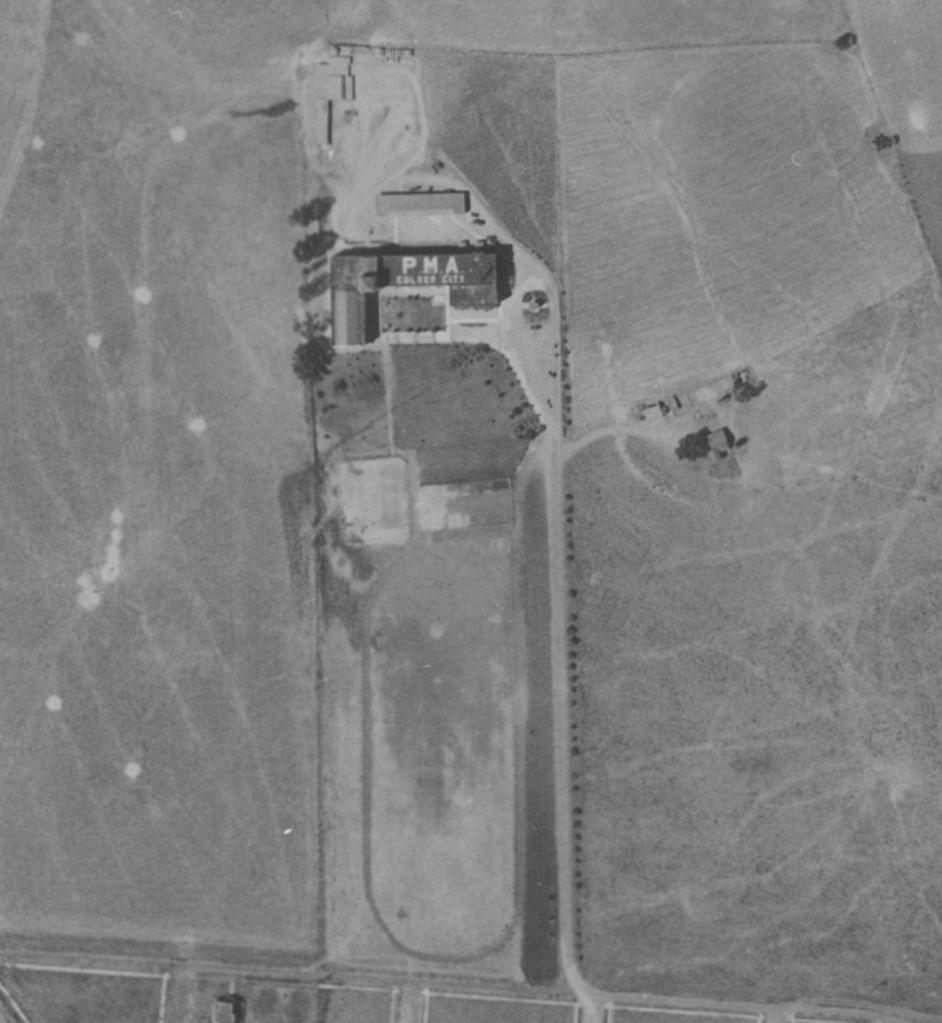
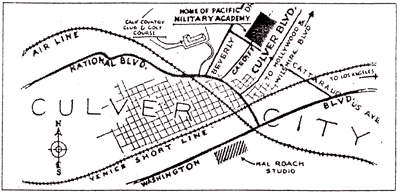
For more information, see Pacific Military Academy by Culver City historian Julie Lugo Cerra (1945-2023).
Page-Oneonta Military Academy / Page Military Academy (1941-1942)
On June 22, 1941, the Los Angeles Times reported that Page Military Academy had purchased PMA for $250,000. “Maj. Vaughan plans to operate both schools, using the Page Academy for small boys and Pacific for high school cadets. The deal was made through the Harry H. Culver Realty Co.”
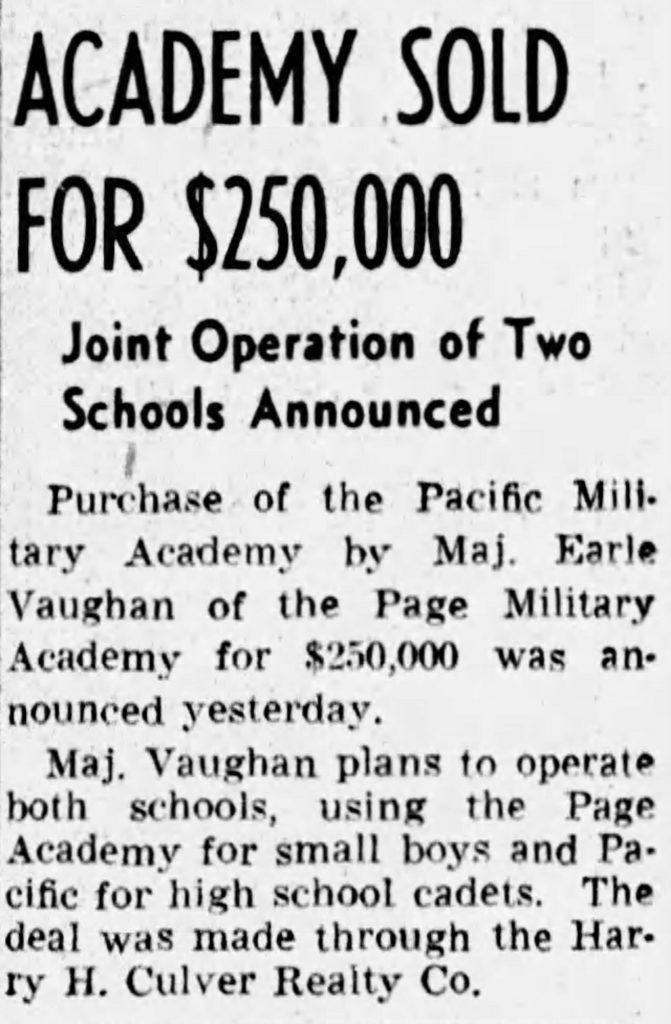
With Page having “taken over the Oneonta Military Academy” by August 1941, the school was to operate under the name Page-Oneonta Military Academy.
The Page Military Academy has taken over the Oneonta Military Academy and will operate two fully equipped schools on two different campuses under the name Page-Oneonta Military Academy. The Page School, known as the “big school for little boys,” on Cochrane Ave., Los Angeles, will be for the education of grammar school cadets, according to major Earl R. Vaughn, commandant.
L. A. Times, August 24, 1941.
The Page-Oneonta Military Academy, whose spacious Culver City campus was formerly occupied by the Pacific Military School, will be for the instruction of high school youth.
Fall semesters for both grammar and high school youths will begin Sept. 15.
The Culver City campus has been completely renovated and overhauled since it was acquired from Pacific Military Academy. The spacious new modern buildings, located on a rolling hillside overlooking the athletic field, have been redecorated within and without during the summer. The athletic department is fully equipped for polo, swimming, tennis, golf, football, baseball, basketball, track and other sports.
Major Vaughn has spent the summer personally selecting a highly trained faculty. Parents are invited to inspect both schools and visit with the registrar to get further information concerning the Academy. Page Military School has had 34 years experience in educating smaller boys, while the Page-Oneonta Military Academy is fully accredited to colleges and universities.
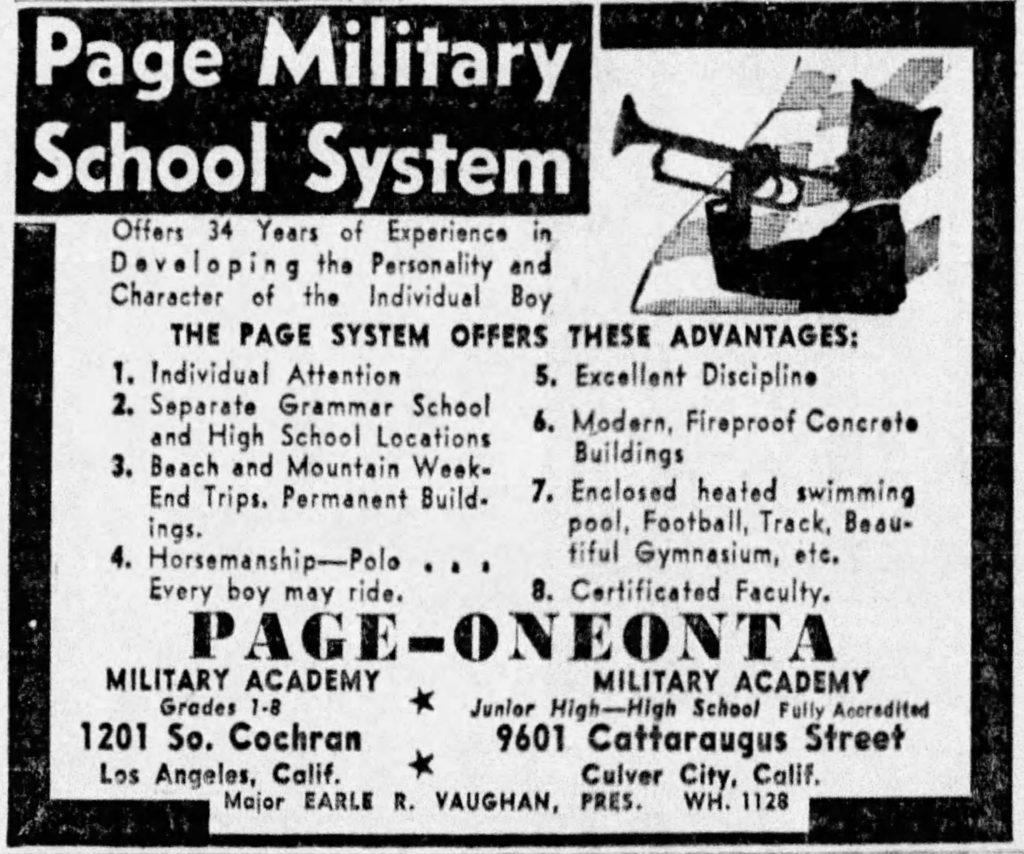
The “Page-Oneonta” name regularly appeared on the sports pages through November 26, 1941 (the end of its football season) after which there is no newspaper record of Page-Oneonta Military Academy – only Page Military Academy.
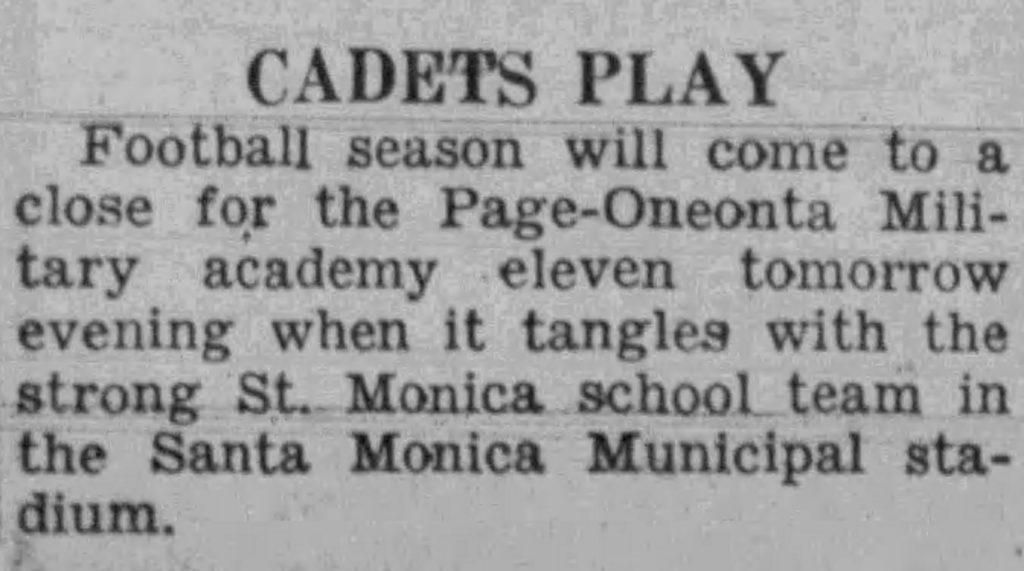
In January 1942, the Los Angeles Evening News reported on the basketball team’s schedule – so apparently the Oneanta name was quickly dropped.
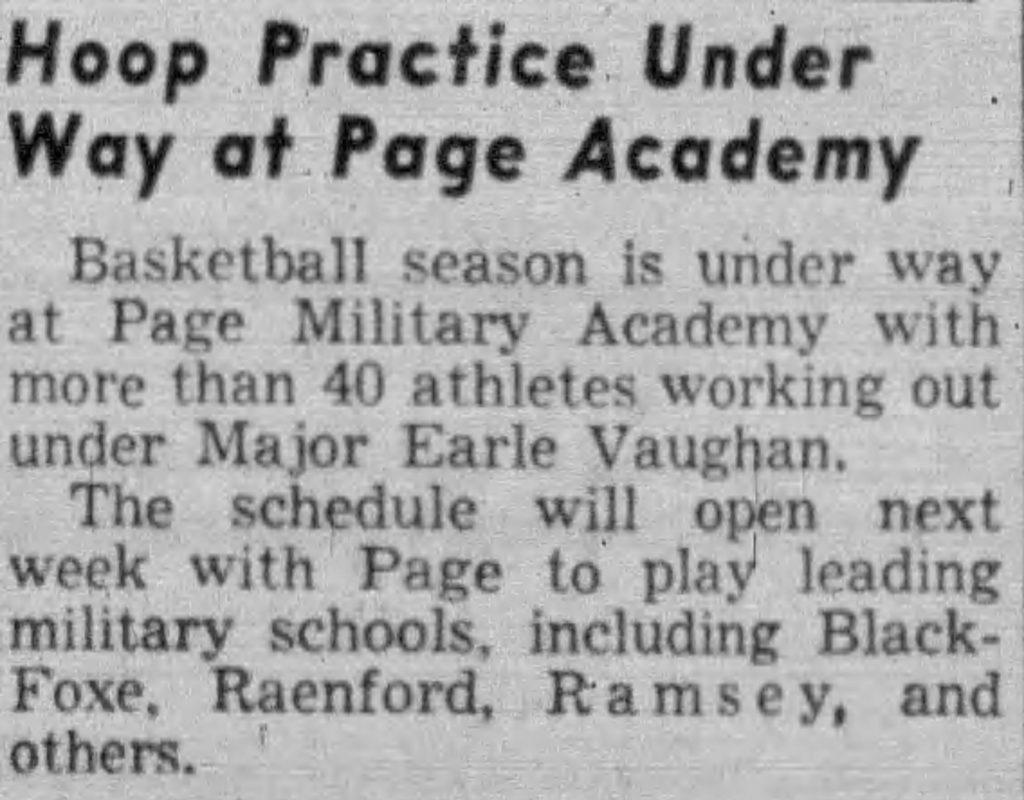
During World War II, the Military Academy served as a military barracks for the Army’s First Motion Picture Unit (FMPU), formed in 1942 to produce training films, morale films, and propaganda films. Troops initially bivouacked in tents on the athletic field, and the school was used for training. The troops mostly worked at Fort Roach – the informal name given Culver City’s Hal Roach Studios during the war. A film sequence, sometimes appearing on the History Channel, shows future President Ronald Reagan lining up for lunch outside the cafeteria.
Page Military Academy had stopped using the Cattaraugus campus in 1943. In May 1943, the Los Angeles Times reported that “Pacific Military Academy” had been granted a zoning variance to be converted into a hospital; though it is unclear if it was used as such. A July 1943 newspaper ad has only the Cochran Avenue address with the school returning to its former Page Military Academy name; it was no longer admitting the older boys who had been taught at Cattaraugus, but “boys, 4 to 14.” (As of 2023 it was operating as Page Academy.) In 1944, the U.S. military continued to use the site, when FMPU staged a “fun frolic and dance … for personnel of the unit at the combat replacement pool, at the old Page Military Academy.” (Evening Star News, April 28, 1944.)
Cheviot Hills Military Academy (1946-1952)
In 1946, Francis Joseph “Frank” Brick (1902-1991) was the second-generation operator of California Military Academy (then in Baldwin Hills) when he took over the former Page Military Academy’s Cattaraugus campus to open the Cheviot Hills Military Academy. Initially, at least, Mr. Brick presided over both schools.
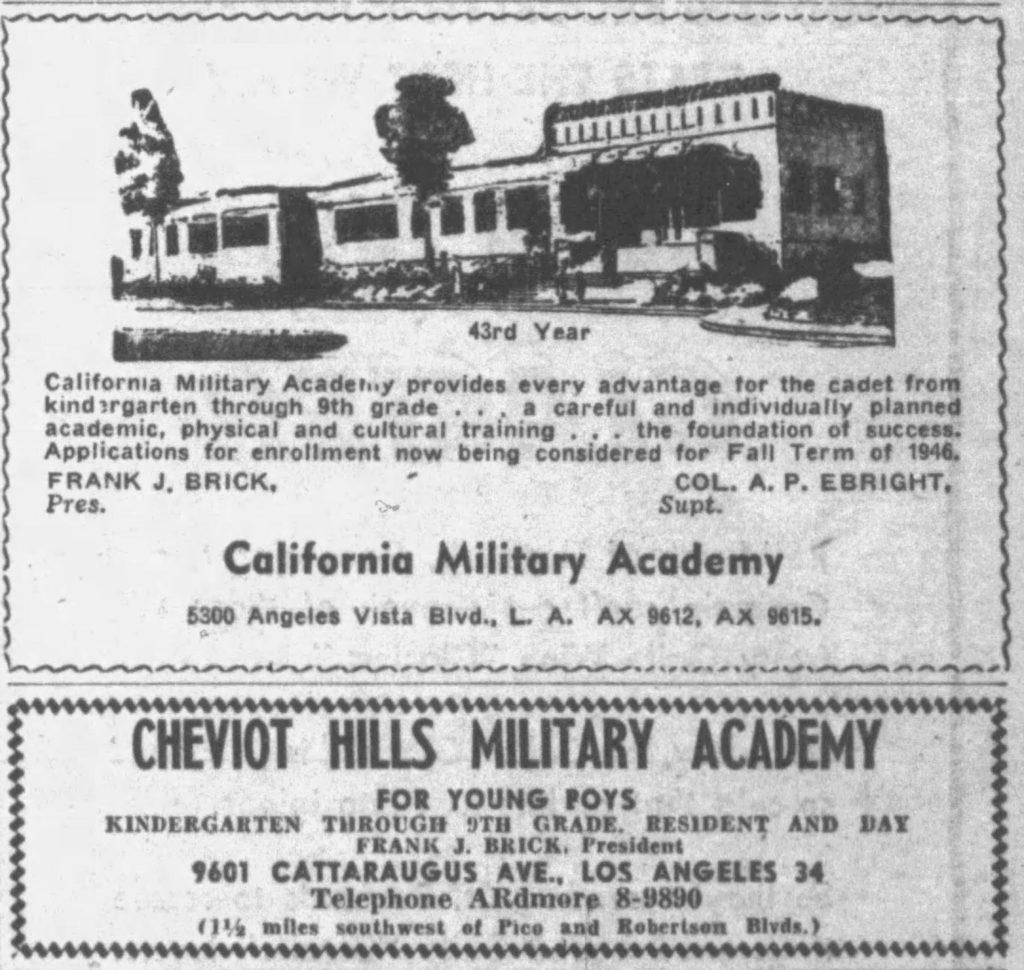
In December 1946, a Los Angeles City Zoning administrator denied Frank Brick a variance to construct a motion picture studio on the site following “protests by subdividers, including Walter Leimert and veterans, against construction of a commercial industry in an area set aside for residences.” (L. A. Times, Dec. 24, 1946.) “Names of the backers of the studio were not given.” (L. A. Evening Citizen News, Feb. 14, 1947.) The Planning Commission followed suit, and, even though Brick “said the studio would be used largely for production of educational films and all shooting would be done inside on sound stages” his appeals were unsuccessful. (Evening Vanguard, March 8, 1947.) So, the school kept operating at the Cattaraugus site.
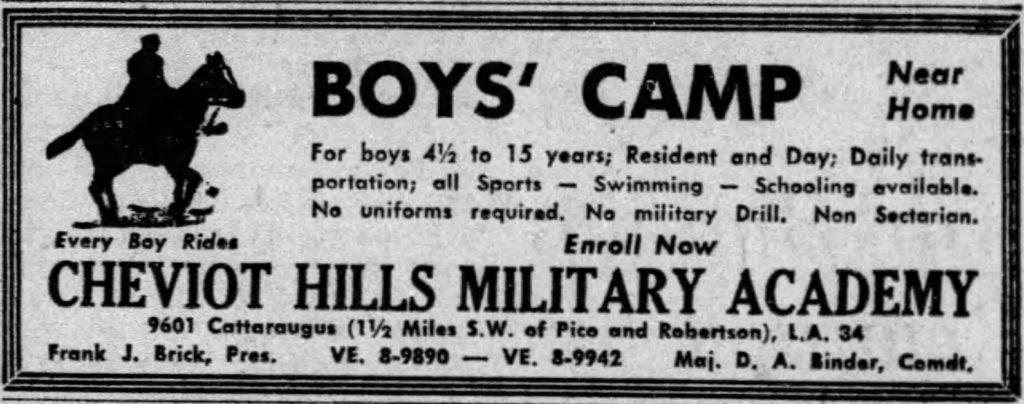
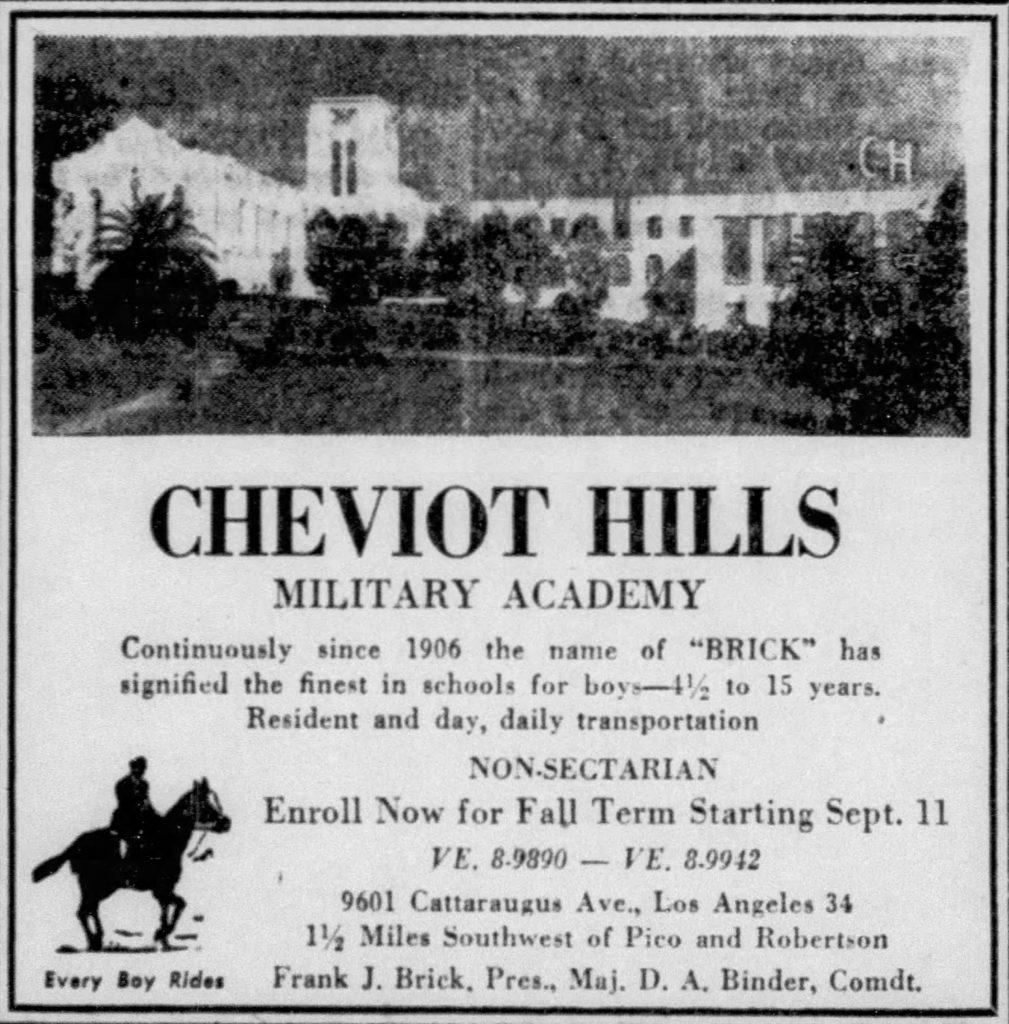
For more information, see alumnus Dick Clark’s Cheviot Hills Military Academy website which includes comments from other alumni.
Chaminade Catholic High School (1952-1961)
In 1952, the Marianist Order bought the land and established Chaminade High School for Boys (named for the order’s founder, Father William Joseph Chaminade). The school’s team name, the Eagles, can be traced to a tower at the school that featured an Army Eagle emblem in tile. Contemporaneous reports said that the buildings were severely rundown and “the grounds resembled a jungle,” but an article in the May 2, 1952, The Tidings newspaper (published by the Los Angeles Catholic Archdiocese) described a beautifully landscaped, 10-acre campus:
Main building on the beautifully landscaped, 10-acre campus includes offices, classrooms, dormitory, chapel, library, auditorium and dining hall. Other buildings provide additional classrooms, laboratories, infirmary, faculty residence, athletic showers and lockers. Athletic facilities include a swimming pool, football field, baseball diamond, basketball and tennis courts. Cheviot Hills Military Academy, directed by Frank J. Brick, a Catholic layman, will continue to operate until the end of the present school term. Only boarding high School for Boys in Los Angeles, Chaminade High is well equipped to accommodate a limited number of resident students in bright and airy double rooms.
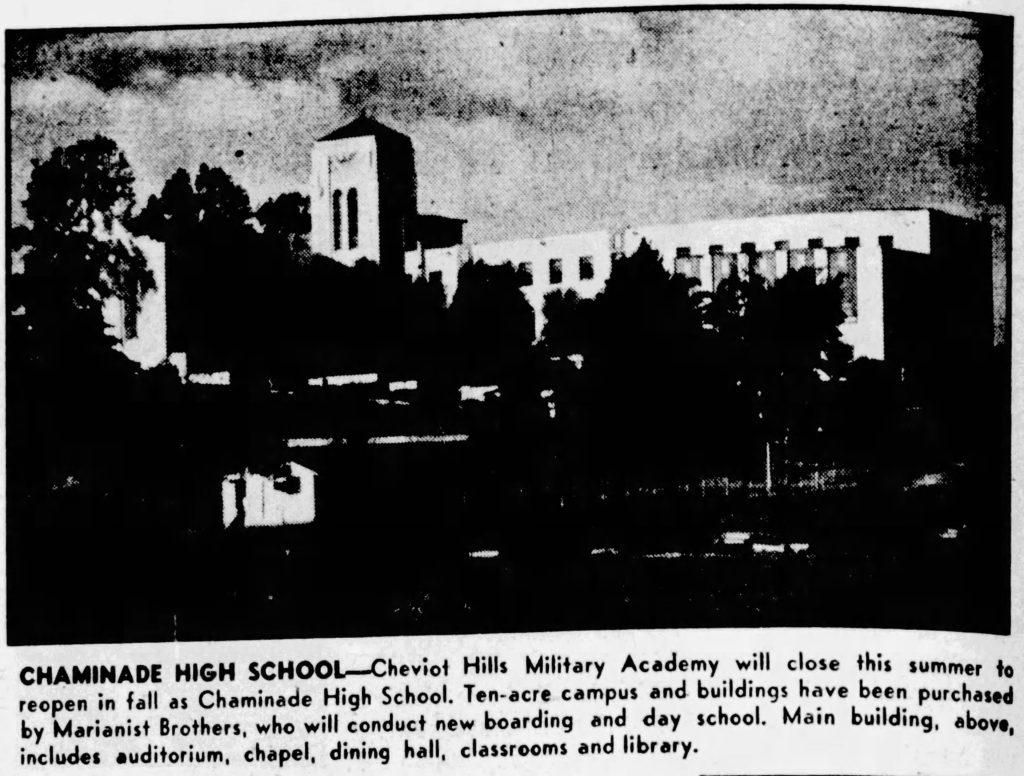
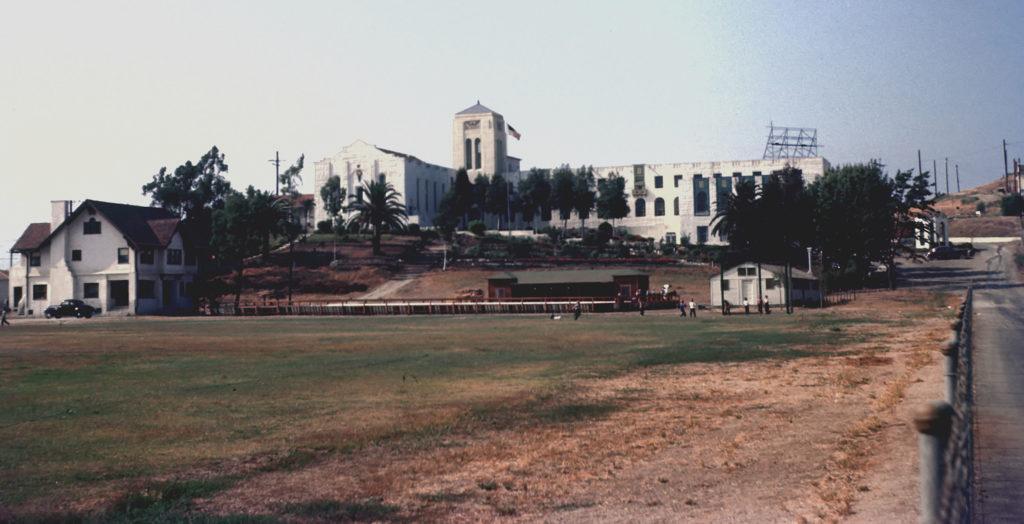
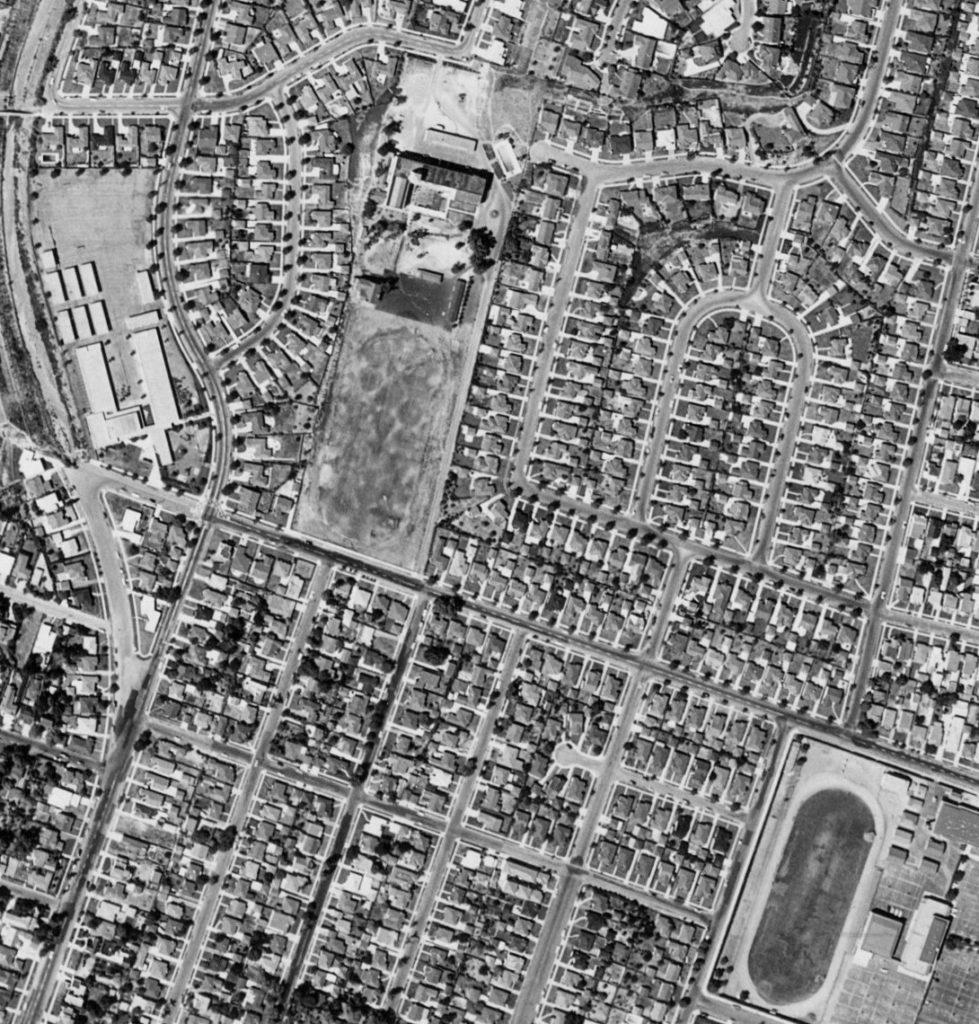
Beyond
In 1961, with the campus’ buildings deemed unsound, Chaminade moved to Canoga Park (now West Hills).
In April 1962, the Los Angeles Times reported the impending demolition of the “stately Florentine building” for construction of 41 private residences by James Pelton & Associates, developers. With a cost of “more than $2.5 million in land and building costs,” the “expansion of the fashionable Beverlywood section” would comprise homes in the one- and two-story, three-to-five-bedroom houses, “in the $50,000 and $60,000 price class.”
Chaminade’s Father Ted Ley wrote in 2004 about his impressions of the PMA campus, including that Beverly Drive goes right through the center of the former campus.
The campus was only 10 ½ acres, but originally it was surrounded by farm land, and all the way till PMA closed, it was possible to do horseback riding in the neighborhood. During World War II, two radio towers were constructed at the base of the campus. The architecture of the main building was impressive as were its “hanging gardens” and overlook upon the playing field. The school boasted a swimming pool and a field house, in addition to the stable and two teachers’ residence buildings. Several palm trees in the back of homes along Beverly Drive are the sole remaining vestiges of Pacific Military Academy and its successors.”
